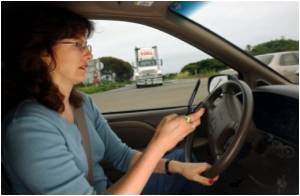Wearing helmets and seatbelts, obeying speed limits and avoiding drunk driving could save between 347,000 and 540,000 lives worldwide every year.

TOP INSIGHT
Wearing helmets and seatbelts, obeying speed limits and avoiding drunk driving could save between 347,000 and 540,000 lives worldwide every year.
Road Safety Measures
Improving road safety by adopting proven interventions targeting four key risk factors for road injuries (speeding, drunk drunken, not wearing helmet, and seatbelt use) in 185 countries could save up to half a million lives a year, and offers enormous potential to improve the health and development of individuals and nations, according to a new Series published in The Lancet.These new data are vital to stimulate the next major effort in global road safety—ensuring that evidence-based interventions are successfully implemented on a global scale, say the authors.
Road traffic crashes kill more than 1.35 million people each year, with over 90% of those fatalities occurring in low- and middle-income countries (LMICs). Yet despite global efforts to prioritize road safety over the past decade, and a growing body of evidence to support proven interventions, many national governments have not made road safety a priority and adequate funding for implementation in LMICs has not been forthcoming, leaving a gap between evidence and action.
The Lancet Series on road safety, published ahead of the first ever UN High-Level Meeting on Road Safety, calls for increased political and financial commitments and for road safety to be included in mainstream development policies, arguing that it is essential to achieving the UN Sustainable Development Goals (SDGs), including the target to halve road traffic crash fatalities and injuries by 2030.
“Most road traffic deaths are preventable, but sadly the number of fatalities continues to rise in low-income countries while progress in high-income countries has slowed over the past decade”, says Series coordinator Professor Adnan Hyder from The George Washington University, USA. “With the second United Nations Decade of Action for Road Safety (2021-2030) underway, our work for this Series clearly shows that proven road safety measures can save lives in all countries, rich and poor alike. For one of the first times, we provide decision-makers and donors with evidence in one place on the value of implementing specific interventions in every country worldwide.”
Adopting proven road safety interventions could prevent 40% of road deaths
An analysis of data from 74 studies in 185 countries estimates that targeting four key risk factors for road injuries and deaths (speeding, drunken drunken, and non-use of crash helmets and seatbelts) could prevent between 25% (assuming full overlap between interventions) and 40% (assuming no overlap between deaths had the intervention been fully implemented in 2018) of all fatal road injuries worldwide every year.For example, interventions to reduce speeding such as infrastructure changes and electronic speed control could save an estimated 347,258 lives globally each year, while measures to tackle drunk driving such as enhanced drink driving enforcement could save a further 16,304 lives. Furthermore, an estimated 121,083 and 51,698 lives could be saved by passing and enforcing rules on wearing seatbelts and motorcycle helmets, respectively.
All countries would benefit from increased road safety measures to varying degrees (see appendix table 4). For example, improving seatbelt use would have a particularly large effect on reducing road deaths in the USA (saving an estimated 14,121 lives every year) and China (13,228). The benefits of increasing motorcycle helmet wearing would be largest in China (saving 13,703 lives a year), Brazil (5,802), and India (5,683), that have a high incidence of motorcyclist injuries. Tackling speeding would be the single most effective measure to reduce road fatalities in most countries, preventing an estimated 88,374 deaths in China, 1,027 in Spain, and 815 in the UK.
“We hope that these new estimates provide tangible impetus for the global road safety community to focus on implementing evidence-based interventions, especially in low- and middle-income countries”, says Series co-author, Dr Andres Vecino-Ortiz from Johns Hopkins Bloomberg School of Public Health, USA. “These estimates can be used by policymakers to perform their own priority setting analyses to reduce road fatalities.”
Improving post-crash care could save 200,000 lives a year
There is also a strong case for strengthening trauma care in LMICs. Modelling conducted for the Series estimates that effective trauma systems that are able to treat all road traffic victims according to need could save over 200,000 lives a year in LMICs, equivalent to a 17% reduction in deaths. The more realistic scenario of 50% coverage could save over 100,000 lives a year, equivalent to 8% fewer fatalities.For specific clinical trauma interventions, focusing on damage control resuscitation (i.e., strategies to control hemorrhage and early resuscitation) is most likely to save lives (more than 35,000 lives a year at 50% coverage), followed by interventional radiology to control bleeding (over 29,000), tranexamic acid for suspected bleeding (10,000), and pre-hospital tourniquet (over 5,700).
“While prevention remains the cornerstone of reducing road traffic deaths, knowing which trauma interventions are likely to have the greatest impact on saving lives will help make the best use limited health resources”, says co-author Dr Junaid Razzak from Weill Cornell Medical Centre, USA and Aga Khan University College of Medicine, Pakistan. “Although strengthening trauma systems is the ultimate goal, clinical and simple health system interventions are a practical starting point to save lives sooner.”
Road fatalities in adolescents on the rise
A separate new analysis examined transport injuries for adolescents in 204 countries from the Global Burden of Disease (GBD) 2019 study by the Institute for Health Metrics and Evaluation at the University of Washington’s School of Medicine is published in The Lancet Public Health. These injuries include pedestrians, cyclists, motorcyclists, motor vehicles, and other transport-related incidents.The findings reveal that although the death rates among 10-24 year old persons declined by a third between 1990 and 2019 (from 17.5 to 11.5 per 100,000), the proportion of deaths occurring in low- and low-middle socio-demographic index (SDI) countries [3] almost doubled from around 28% in 1990 (74,713 of 271,772) to about 47% in 2019 (100,102 of 214,337), with 20-24 year old persons being most affected.
The largest increases in transport injury death rate have been in Paraguay (+97%), Djibouti (+69%), Lesotho (+50%), and the Seychelles (+41%).
The new GBD analysis also shows a slow pace of decline in transport injury deaths in high-SDI countries over the most recent decade, with a drop of just 1.7% a year between 2010 and 2019 compared to the fall of 2.4% a year between 1990 and 2010 .
“These new estimates reflect the neglect and chronic underinvestment by the global health community to prevent injury-related harm in adolescents”, says author Dr Amy Peden from The University of New South Wales, Australia. “Unlike many other public health epidemics, there are simple, affordable and proven interventions to reduce road traffic injuries that are simply not being applied or enforced. Progress has stalled in high-SDI countries and the growing burden of transport injuries in low- and middle-SDI countries demands focused action, including global donor, government and industry investment in injury prevention.”
A sustainable approach to road safety
The authors of the Series outline ten challenges that must be addressed to achieve the ambitious target of preventing at least 50% of road traffic deaths and injuries by 2030. These include building a stronger global movement on road safety that incorporates other health and environmental impacts in the solutions (e.g., air pollution, sedentary lifestyles), alongside generating more and better data on what works in different LMICs, and the need for adequate domestic and donor funding. Road safety should also be integrated as a core component of the global movements towards universal health coverage, maternal, newborn, child and adolescent health, and healthy ageing.“There have been many successes on road safety at the global level including its inclusion in the Sustainable Development Goals—but the rhetoric has yet to deliver results on the ground”, says Series co-author Dr Margie Peden from the George Institute for Global Health, UK. “The global road safety community must re-evaluate its strategy for this Second Decade of Action—a real, sustained decline in global road traffic injuries and deaths will only happen if there is a focus on implementation of effective interventions and concerted country action.”
A Lancet Editorial that accompanies the Series says that, “Road traffic injuries cannot be understood as an isolated issue. Health systems, sustainable urban development, local and global leadership, governance, and the future of cities are all aspects of a movement that needs to be galvanized to improve the unnecessary burden of these injuries. But, as the Series shows, with a coordinated, multisector approach, road traffic injuries are both treatable and preventable.”
Source-Eurekalert
 MEDINDIA
MEDINDIA




 Email
Email







